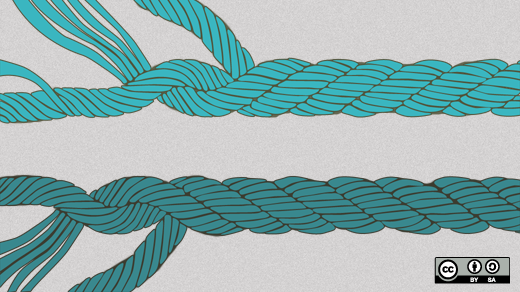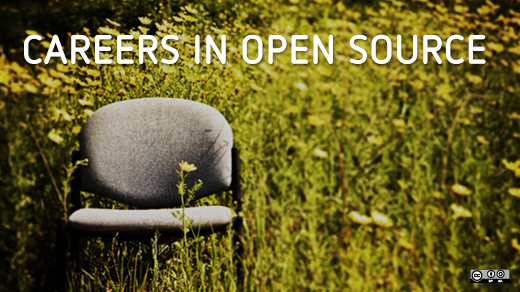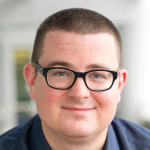Ancient Greece had its Great Explainers, one of whom was Plato. The open source community has its Great Explainers, one of whom is Michael Tiemann.
From a conference room on the 10th floor of Red Hat's Raleigh, NC headquarters, Tiemann is prognosticating. The place affords the kind of scope he relishes: broad, sweeping, stretched to a horizon that (this morning, anyway) seems bright. As the company's VP of Open Source Affairs explains what differentiates an open source software company from other firms in a crowded market, he exhibits the idiosyncrasy that has marked his writing for decades: the tendency to pepper his exposition of open source principles with pithy maxims from a diverse range of philosophers, politicians, political economists, and popular writers. It's a habit borne, he says, of the necessity of finding something that resonates with the many skeptics he's confronted over the years—because necessity, he quips (quoting Plato, of course), is the mother of all invention.
"Because of my background in science," Tiemann says, "I think that being able to look at analogous situations and to validly argue similarities—similar cause and effect mechanisms, similar properties of state or motion—help [me] to discern whether the effect being presently observed is something that can be observed as more of a rule of nature, or some special case."
Plato, famously, felt similarly. He believed that what humans encounter in their everyday lives is merely a pale reflection of something more perfect, some eternal form that transcends us all.
Make no mistake: For Tiemann, open source is not simply a business model. It's not just a method of developing software. It isn't an ethic. It's a Platonic form—perhaps something like a force, a tendency. Throughout history, many people have tried to glimpse it, if only for a moment. Tiemann knows he is but one of them: the programmer, the hacker, attempting to articulate, through code, this thing that abides.
Failure to recognize the magnitude of what makes open source businesses successful, Tiemann says, is what has led so many to misunderstand them.
"How do we know that this whole enterprise is not really built on under-pricing—the product of one hacker, versus being able to build a sustainable model," Tiemann says. "From my perspective, it is important to show there is something that is happening right now, and is real, but to also reference the best analogies we can find."
The arc of the software universe is long, but it bends toward openness. A conversation with Michael Tiemann can lead to no other conclusion.
An explainer's journey
The view was not always as clear. In 1987, when Tiemann was struggling to find a way into the fast-moving market for compilers, he stumbled upon the writing (and the code) of Richard Stallman. Because the code for the GNU C compiler was open, Tiemann was able to properly study it and port it to new architectures—with results that trumped even the most polished efforts of the time.
"What that told me was that it was possible for an independent person to accomplish by themselves something that an entire company, an entire marketing team, an entire engineering and development team could not do," Tiemann says.
At the time, the power of an open source approach to software was evident, Tiemann says, to many of his peers. So was the technical superiority of open source products. But whenever Tiemann broached the subject of building a business on open source, his interlocutors scoffed. Open source thinking ran counter to everything that made companies succeed, they said.
"When I was promoting this idea that this superior technology could absolutely move the industry forward," Tiemann says, "I got a tremendous amount of pushback from people who basically said, 'Look, in our capitalist environment, you cannot be successful if you cannot exclude competitors from the marketplace. You cannot be successful if you cannot force customers into a trap.' And I really did not believe that."
Tiemann didn't believe it because all around him he saw evidence to the contrary. Take lawyers. The law is a common resource, one without owner, and yet those who make expert use of that resource—lawyers—are certainly well compensated, Tiemann observed.
"I saw an opportunity and basically said, 'Hey, if we are more expert in being able to adapt this software faster, apply it to a wider range of problems, etc., we can help people move to the next field faster, then we should be able to write a ticket based on the value that's opened by that.'"
The analogy converted a few skeptics, so Tiemann pushed ahead with one from finance. Picture a bank, he said, that pays to every one of its patrons an amount of interest based on the sum of all the money it contains.
"In the conventional world, a bank pays interest based on the amount of money that's deposited. But imagine a bank where no matter how much you deposit, the bank pays interest on the sum total of all the assets to which you make the deposit. So if a whole bunch of my friends all put money into a communal bank account, and then we all get paid the total interest on that sum total, how attractive is that?"
In this way, Tiemann figured, the value of his business's core asset—the code it modified, packaged, and supported for others—would grow every time his company helped someone make a significant contribution to it. But it couldn't do that if it withheld source code. To win, Tiemann realized, he had to share. This is open source's "force multiplier."
"By making small contributions to this code, I became a member of a community which aggregated all their enhancements as well," Tiemann says. "And so I put in a little, and I got back a lot, and that seemed to me to be an outrageously great trade. And it seemed to everyone else that they were making a great trade, too."
So trade he did. In 1989, Tiemann established Cygnus Solutions, the world's first open source software company. Each of the company's three co-founders put up $2,000 to get the business moving (the amount should have been $5,000 apiece, but Tiemann couldn't afford it). But what Plato once said held true: "The beginning in every task is the chief thing." A decade later, Cygnus merged with Red Hat in a deal worth $687 million.
Suddenly, Tiemann's cautious detractors seemed more like early objectors to Copernicus' heliocentrism: they'd just plain misunderstood the mechanics of their universe.
"A lot of the skepticism is a response to the abstract; it's a response to the unknown," he says. "And when you bring a concrete success story with just absolutely stellar credentials that doesn't just outperform the field, but embarrasses the field, then the skeptics begin to look like they're on the wrong side."
An explainer's insight
Here's how to think like Tiemann: Cooperate in order to compete. Facilitate in order to innovate. Recognize the best solutions available, then be a proper steward for them. After all, as Plato put it: "There is no harm in repeating a good thing."
In the business of open source, value accrues to those who enable, not to those who sequester. True open source visionaries understand that success just looks different in this field. That's the toughest lesson of all, Tiemann says: A firm is only as successful as what it puts in motion—what it helps make common.
"There are many who have tried to bring the zero-sum game concepts to the open source community," Tiemann says. "They want to wall off some piece of technology, at least from a positioning point of view. They want to force everybody into that particular worldview."
And they'd be on the wrong side of history. Open source topology looks more like a Möbius strip, Tiemann has said. Resources and value are always flowing between parties in a cycle without end, but at each turn some enhancement propels and enriches the process for everyone.
"It's not just whether we deliver on time and on budget," Tiemann says. "It's not just whether this thing works or not, but changing how the customers think about and use software to reach things that they previously may not have even imagined."
It's easier said than done.
"You can't simply be different and expect to be successful," Tiemann says. "If you are different enough than the status quo, you must change the status quo to be successful."
An explainer's worry
More than a decade has passed since Cygnus' merger with Red Hat. From 1999 to 2008, Tiemann worked as Red Hat's CTO and helped architect the relationships that propelled Linux into the enterprise. He also served as president of the Open Source Initiative, stepping down in 2012. As Red Hat's VP of Open Source Affairs, Tiemann continues the meticulous work of tracking open source trends—not all of which excite him.
He's more than a bit worried about the so-called "post-open source" thinking embraced by programmers who prefer releasing code without a license. It's a retrograde move, Tiemann says, one that threatens to undo years of progress.
"One of the ideas of the Open Source Initiative was to make open source a safe choice—to make it be something that was well enough to find, that you knew what it was, that you knew what you could do with it, and you knew who you could trust," he says.
Plato may have insisted that "laws are made to instruct the good [...] in the hope that there may be no need of them," but for the moment Tiemann is not ready to dismiss the open source licenses that embody the very principles he's devoted a career to explicating.
"To have so much code being developed with no license, with no developer origin, certification, or anything like that, it plays into many of the fears that existed back when I was starting," he says. "And we addressed those fears by being upfront—by being not only transparent, but also really standing for something very specific."
To ignore these modern-day expressions of open source philosophy would be to disavow something as fundamental as the changing of the tides.
And the tide is indeed changing, says Tiemann, who predicts the kind of sea change to which a nearly three-decade devotion to open source has made him accustomed.
"What encourages me," he says, "is that there is a lot of positive energy from both the younger people getting into open source as well as the older people who have seen the generational ebb and flow of proprietary versus open systems, and I think that there still are a lot of people who are not as interested in seeing what can be destroyed as they are in seeing what can be built."
Plato was adamant: The world we know today may change, but the perfect forms persist. As a new generation of open-minded advocates take up the cause, one can only hope they build something in harmony with the laws of an open source universe—which Michael Tiemann will gladly explain.
Hear the entire interview with Michael Tiemann on Hacker Public Radio.
View the complete collection of articles from Careers in Open Source Week.







3 Comments